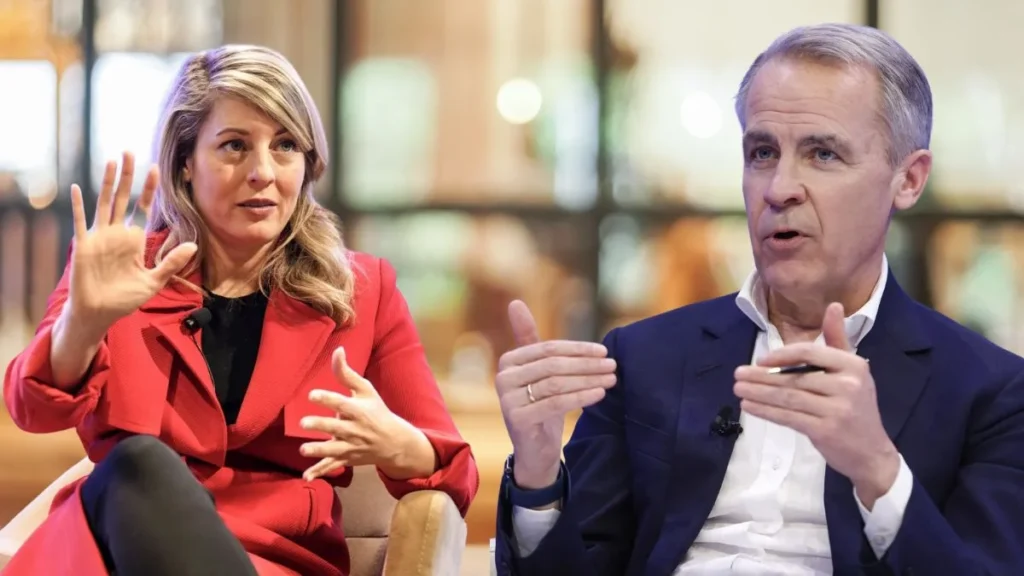Key Takeaways
- Canada eyes stronger ties with Europe amid growing trade and political uncertainty with the U.S.
- Foreign Minister Mélanie Joly emphasized the need to diversify trade partnerships and reduce dependency on the United States.
- Despite ongoing tariffs, Prime Minister Carney and President Trump recently met with the goal of reestablishing U.S.-Canada ties.
- Canada’s new strategy includes a pivot toward the UK and EU, reinforcing its sovereign stance in global diplomacy.
- Domestic political and economic impacts, especially from tariffs, are shaping Canada’s foreign policy priorities.
Canada Eyes Stronger Ties with Europe Amid Uncertain U.S. Trade Relations
For decades, Canada has walked a diplomatic and economic tightrope, balancing deep ties with its southern neighbor while nurturing a global presence. Now, the country is making a bold pivot. In a bid to reshape its foreign policy and reduce dependency on the United States, Canada is turning toward Europe — signaling a significant recalibration in its international strategy.
Foreign Minister Mélanie Joly pulled no punches in a BBC interview this week: “Canada has been over-reliant on the U.S. for too long,” she said. “That’s why we want to be closer to Europe. We are the most European of all non-European countries.”
Her comments come at a time when U.S.-Canada relations are at a crossroads, strained by tariffs, political unpredictability, and economic anxieties.
A Tense Trade Landscape
Earlier this week, Canadian Prime Minister Mark Carney met with U.S. President Donald Trump in the Oval Office. It was a meeting long in the making — not just in terms of logistics, but in hopes of mending frayed ties. The result? A cautious optimism about a “fresh start.”
Still, underlying tensions remain. The Trump administration has imposed sweeping tariffs — 25% on steel and aluminum and targeted taxes on automobiles — citing national security and drug trafficking concerns, particularly related to fentanyl.
These tariffs have rocked Canada’s manufacturing sector, with ripple effects across the job market. “Some have lost their jobs, and many families are affected,” Joly admitted. “My job and the Prime Minister’s job is to make sure we defend them.”
According to Joly, these economic disruptions became the top issue in Canada’s recent election — an issue that could define the new government’s mandate.
Carney’s Diplomacy: A New Era?
After the discussion, Trump praised Carney but did not promise to remove the tariffs. Still, Carney reported that the U.S. president seemed “willing to have that negotiation,” offering a glimmer of hope for progress.
Back in Ottawa, Carney briefed provincial leaders on his Washington visit. Premier of Ontario Doug Ford hailed the PM’s moderation and described the conversation as “a good start on a new relationship.”
Yet, Canadian officials remain wary. “There’s a lot of unpredictability coming out of the White House,” Joly cautioned. “We need to hold steady and be ready.”
Why Canada Is Pivoting Toward Europe
While repairing U.S. ties is critical, Canada isn’t putting all its eggs in one basket. Instead, it’s actively looking eastward. Strengthening diplomatic and economic links with the UK and EU is now a top priority.
This isn’t just rhetoric. From trade agreements like CETA (Comprehensive Economic and Trade Agreement) to cultural and historical connections, Canada sees Europe as a natural ally in its diversification strategy.
“Our values align. Our economies are complementary. And in an age of geopolitical tension, we need partners who believe in multilateralism,” said Joly.
The minister’s framing of Canada as “the most European of all non-European countries” underscores the shared history and governance models between Canada and many European states — from parliamentary democracy to human rights commitments.
Reasserting Canadian Sovereignty

National sovereignty is also emphasized in Joly and Carney’s agenda, both substantively and symbolically.
It is expected that Trump will travel to Canada for the G7 conference next month. And in a move brimming with constitutional symbolism, King Charles III has been invited to formally open Parliament — something that hasn’t occurred since 1977.
“This is a clear signal of Canada’s sovereignty,” Joly said. “It’s a reminder that we chart our own path on the world stage.”
While the monarchy is largely ceremonial, the invitation is meant to reaffirm Canada’s distinct national identity at a time of economic and diplomatic uncertainty.
The Domestic Implications of Foreign Policy
The real-world implications of these global maneuvers are felt most acutely at home. Factories have scaled back production. Families are navigating job losses. Tariffs are driving up costs for small firms. As a result, public sentiment has shifted: Canadians increasingly demand that their leaders protect national interests first.
By confronting U.S. policies head-on while exploring broader alliances, Carney’s government is trying to balance pragmatism with principle.
“Foreign policy isn’t abstract anymore,” said one senior Canadian official familiar with the negotiations. “It’s about paychecks, food prices, and security.”
Looking Ahead: What Comes Next?
As Carney assembles his cabinet ahead of Parliament’s reopening, his administration is laying the groundwork for what could be a transformative period in Canadian foreign policy.
Analysts expect Canada to push for formalized trade expansions with the EU, reinforce defense commitments through NATO, and leverage global events like the G7 to showcase its independent global voice.
One key question remains: Will the U.S. respond to Canada’s evolving stance with cooperation, competition, or confrontation?
For now, Canada’s message is clear — it’s no longer content to be seen as a junior partner. It wants to be seen as a sovereign, strategic player on the global stage.
Conclusion
Canada’s shift toward Europe is a declaration of intent rather than merely a diplomatic move. In a world where alliances are constantly tested, Canada is choosing diversification over dependency, sovereignty over subordination. Whether these moves will pay off in the form of lifted tariffs, new trade deals, or stronger global standing remains to be seen. But one thing is certain: the era of automatic alignment with the U.S. is over. Canada is charting its own course.


